Folk and Traditional Arts Program Continues to Foster Old Traditions while Facilitating New Celebrations with New Director Makaela Kroin
Celebrating diversity, increasing access, and expanding the narrative are all big concepts that may be easier said than done. But Makaela Kroin knows what she’s doing. She came to state parks in January, 2018 with years of experience in public folklore under her belt. She earned her master’s degree in Public Folklore at the University of Oregon and has worked previously as a program coordinator with Oregon Folklife Network, the state of Oregon’s Folk and Traditional Arts Program, administered through UO cooperative extension.
Kroin’s work, in her words, is about working with communities “to help document, preserve, and celebrate traditional culture… This can mean a lot of different things, but it is always community based partnership programming,” she said. “The idea with the program here is to make sure that all cultures of all Washingtonians are reflected in State Parks–not just the dominant culture. So it’s really important for me to find either community leaders or organizations within communities that are doing similar kinds of work so I can participate in this kind of programming for underserved communities. It’s about increasing access.”
Keep reading for highlights from long-standing annual traditions like the Holi Celebration and the Cambodian Festival to more recent programming like Canoe Families and the return of the Chautauqua.
Holi
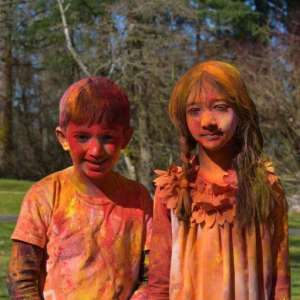
Kroin’s first event with the Washington State Parks’ Folk and Traditional Arts program was the Holi Celebration, the Festival of Colors, back in March, 2018 at Lake Sammamish State Park. Holi is a Hindu spring festival celebrated all over India and throughout the US, and is well known for brightly colored paint powders being thrown everywhere.
Kroin sites the Holi celebration–first facilitated by her predecessor Deborah Fant years ago–as a favorite example of events that Folk and Traditional Arts programming includes. Every year, the event provides space for celebration and sharing. “It brings out a lot of Indian Americans, but it also attracts a lot of people around the park who want to learn more,” said Kroin. “They come and ask questions and learn about traditions that they didn’t know about previously.” In this way, Washington State Parks get to play host to the kinds of events that help us to celebrate community.
The Cambodian Festival
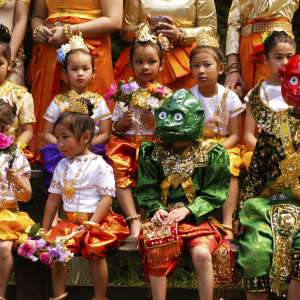
Another long-standing program has been the Cambodian Cultural Festival, founded back in 2008 with the help of Jens Lund, founder of State Parks’ Folk and Traditional Arts Programming. Organized entirely by the Cambodian community, the event is an excellent example of a community partnership that has grown and continues to thrive. “There was an interest within the Cambodian community, and they connected with [Lund].,” recalled Kroin. “That’s exactly the kind of connection that we’re going for. They have all the power to make what they want to happen happen.”
“It’s a really great all-day festival,” said Kroin. “There’s food, music, traditional fashion, martial arts.” The Cambodian Cultural Festival is held each August at Saltwater State Park.
Canoe Families
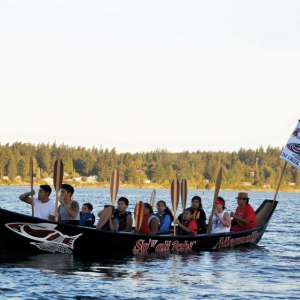
Every summer, Native Nations from up and down the Pacific Northwest embark on an epic journey, by canoe, to gather for the largest event of coastal communities of the year. Canoe Families celebrates the cultural significance of the canoe as the traditional mode of transportation for Pacific Northwest Native Nations. The commemorative tradition began back in 1989 with fifteen Pacific Northwest Native Nations who embarked on epic canoe journeys to Seattle from far and wide. This first event coincided with the 100th anniversary of Washington statehood and the signing of the Centennial Accord in Washington, which recognizes indigenous sovereignty.
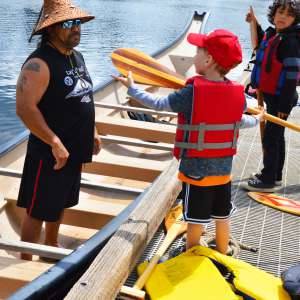
Each year since, Pacific Northwest Native Nations have canoed each summer to a coastal location in Alaska, British Columbia, Washington, or Oregon. “It’s a really amazing tradition of tribes coming together on a communal meeting spot,” said Kroin. “It’s the largest event of the coastal communities of the year to get together and celebrate their traditional culture.” Indeed, the revival of this tradition has revived other arts such as traditional cedar canoe-building, traditional preparation of food, storytelling, and sharing of music through song and drumming.
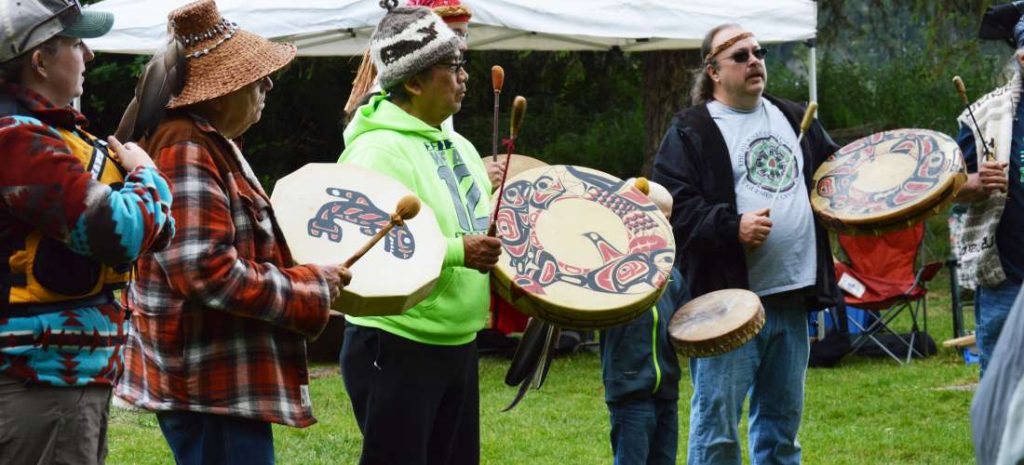
In recent years, Washington State Parks have had the honor of hosting Canoe Family events. According to Kroin, “The canoe journey is many days, and very hard work,” explained Kroin. “They have a support vessel, and will take shifts. When they get to the reservation that is hosting it each year there’s a celebration and a ceremony; sharing, storytelling, singing, drumming, food. The two canoe families events that my predecessors founded and that we’ll put on are in order to raise money for the trips. Two tribes bring their canoes, they take anyone who wants to out on canoes and talk to them a little bit about how they built them, water safety things like that. Throughout the day there are weaving demonstrations, foodways demonstrations (traditional preparation of food, like salmon), singing, drumming, and sometimes storytellers.” This year, we hosted the 13th annual Salish Sea Cultural Celebration at Deception Pass with the Samish and Swinomish Canoe Families, and a Canoe Families Celebration at Millersylvania, with Nisqually and Puyallup groups, both held June 2, a State Parks free day.
The New Old Time Chautauqua
The Chautauqua is an exciting historical tradition that dates back to 1870s Upstate New York. Once referred to by Teddy Roosevelt as “the most American thing in America,” the Chautauqua was a tradition in entertainment, culture, and education. At their hight, there were 1000s of Chautauquas occurring across North America. They often convened on railroad stops (this was pre-automobile), but some were stationary, and they are partially credited with setting the stage for social political movements like Native American suffrage and women’s suffrage.
In Washington, the Chautauqua had a special importance. From 1914 to 1930, Dayton, WA was home base for a Chautauqua circuit every summer. Notables from politicians to inventors, Native American speakers to vaudevillians made the rounds to some 30 towns in Eastern and Central Washington. People gathered to attend lectures, see shows, eat, and socialize. It was said to be the area’s biggest week of the year.
The Great Depression changed everything. It halted the Chautauqua, and by the time the US economy recovered, technologies like the radio and motion pictures had largely replaced the Chautauqua’s functions. But the Chautauqua had had a special way of fostering the exchange of ideas, networking, and entertainment, all within a scenic setting—one that one community has reimagined and brought it back to life: a group called New Old Time Chautauqua. Their return to Washington this summer is a welcome and exciting one.
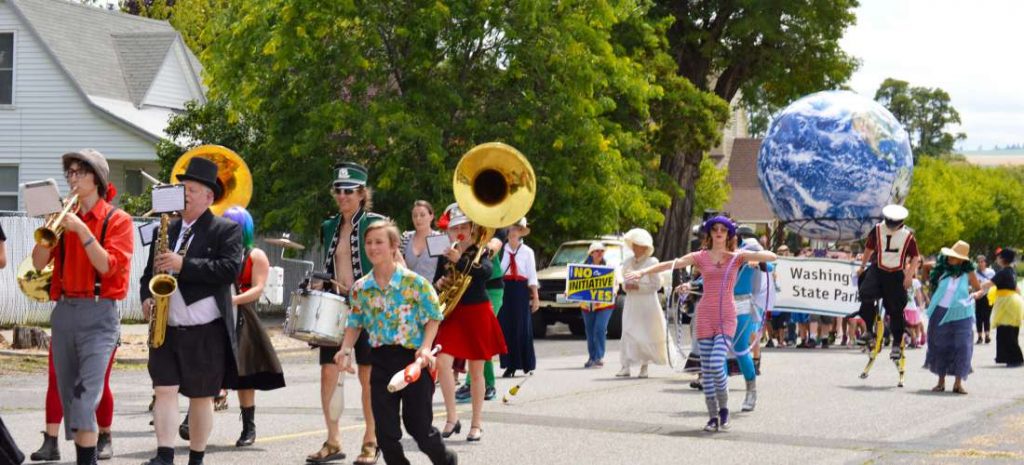
The New Old Time Chautauqua Dayton Parade (photo credit Deborah Fant)
In their words, the New Old Time Chautauqua is comprised of “adventurous performers, healthcare practitioners, and educators.” Founded in 1981 with the participation of notables as the Flying Karamazov Brothers and Dr. Patch Adams, the idea was to “revive the inspiring Chautauqua spirit and bring live entertainment and educational workshops to diverse rural communities.” After a successful tour in 2016, the New Old Time Chautauqua returned this summer for an exciting Washington State Parks tour.
In addition to performances and parades, the itinerary included visits to tribal community centers–a piece that is of particular importance to Makaela’s work. “The really big deal about it is we’re working in collaboration with Lummi and Colville tribes,” she said. “It’s really important to build relationships with tribes that we can continue to do programming with in the future. We want to reshape the dominant narrative; the first white pioneer story. How can we dig a little deeper and share some other perspectives in a place that has hosted life for thousands of years?”
This summer, communities across the state relished in respite from conventional 21st century media, and came out to see the Old New Time Chautauqua. With their aim to “delight, educate, amaze, and provoke the imagination of adults and children alike,” this programming brought communities to life across Washington this summer.
